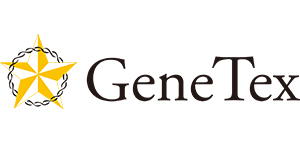PSME2 antibody, C-term
PSME2 antibody, C-term
Artikelnummer
GTX89096-100
Verpackungseinheit
100 μg
Hersteller
GeneTex
Verfügbarkeit:
wird geladen...
Preis wird geladen...
Application Note: WB: 0.5-1μg/ml. IHC-P: 5μg/ml. *Optimal dilutions/concentrations should be determined by the researcher.Not tested in other applications.
Calculated MW: 27
Positive Control: The peptide used to generate this antibody is available for purchase (GTX89096-PEP).
Form: Liquid
Buffer (with preservative): TBS, 0.5% BSA, 0.02% Sodium azide.
Concentration: 0.50 mg/ml (Please refer to the vial label for the specific concentration.)
Background: The 26S proteasome is a multicatalytic proteinase complex with a highly ordered structure composed of 2 complexes, a 20S core and a 19S regulator. The 20S core is composed of 4 rings of 28 non-identical subunits; 2 rings are composed of 7 alpha subunits and 2 rings are composed of 7 beta subunits. The 19S regulator is composed of a base, which contains 6 ATPase subunits and 2 non-ATPase subunits, and a lid, which contains up to 10 non-ATPase subunits. Proteasomes are distributed throughout eukaryotic cells at a high concentration and cleave peptides in an ATP/ubiquitin-dependent process in a non-lysosomal pathway. An essential function of a modified proteasome, the immunoproteasome, is the processing of class I MHC peptides. The immunoproteasome contains an alternate regulator, referred to as the 11S regulator or PA28, that replaces the 19S regulator. Three subunits (alpha, beta and gamma) of the 11S regulator have been identified. This gene encodes the beta subunit of the 11S regulator, one of the two 11S subunits that is induced by gamma-interferon. Three beta and three alpha subunits combine to form a heterohexameric ring. Six pseudogenes have been identified on chromosomes 4, 5, 8, 10 and 13. [provided by RefSeq, Jul 2008]
Uniprot ID: Q9UL46
Antigen Species: Human
Immunogen: Peptide with sequence C-NLEKIVNPKGEEKP, from the C Terminus of the protein sequence according to NP_002809.2.
Purification: Purified by ammonium sulphate precipitation followed by antigen affinity chromatography
Conjugation: Unconjugated
Full Name: proteasome activator subunit 2
Calculated MW: 27
Positive Control: The peptide used to generate this antibody is available for purchase (GTX89096-PEP).
Form: Liquid
Buffer (with preservative): TBS, 0.5% BSA, 0.02% Sodium azide.
Concentration: 0.50 mg/ml (Please refer to the vial label for the specific concentration.)
Background: The 26S proteasome is a multicatalytic proteinase complex with a highly ordered structure composed of 2 complexes, a 20S core and a 19S regulator. The 20S core is composed of 4 rings of 28 non-identical subunits; 2 rings are composed of 7 alpha subunits and 2 rings are composed of 7 beta subunits. The 19S regulator is composed of a base, which contains 6 ATPase subunits and 2 non-ATPase subunits, and a lid, which contains up to 10 non-ATPase subunits. Proteasomes are distributed throughout eukaryotic cells at a high concentration and cleave peptides in an ATP/ubiquitin-dependent process in a non-lysosomal pathway. An essential function of a modified proteasome, the immunoproteasome, is the processing of class I MHC peptides. The immunoproteasome contains an alternate regulator, referred to as the 11S regulator or PA28, that replaces the 19S regulator. Three subunits (alpha, beta and gamma) of the 11S regulator have been identified. This gene encodes the beta subunit of the 11S regulator, one of the two 11S subunits that is induced by gamma-interferon. Three beta and three alpha subunits combine to form a heterohexameric ring. Six pseudogenes have been identified on chromosomes 4, 5, 8, 10 and 13. [provided by RefSeq, Jul 2008]
Uniprot ID: Q9UL46
Antigen Species: Human
Immunogen: Peptide with sequence C-NLEKIVNPKGEEKP, from the C Terminus of the protein sequence according to NP_002809.2.
Purification: Purified by ammonium sulphate precipitation followed by antigen affinity chromatography
Conjugation: Unconjugated
Full Name: proteasome activator subunit 2
| Artikelnummer | GTX89096-100 |
|---|---|
| Hersteller | GeneTex |
| Hersteller Artikelnummer | GTX89096-100 |
| Verpackungseinheit | 100 μg |
| Mengeneinheit | STK |
| Reaktivität | Human |
| Klonalität | Polyclonal |
| Methode | Immunohistochemistry (paraffin), Western Blotting |
| Isotyp | IgG |
| Human Gene ID | 5721 |
| Wirt | Goat |
| Konjugat | Unconjugated |
| Produktinformation (PDF) | Download |
| MSDS (PDF) | Download |

 English
English







